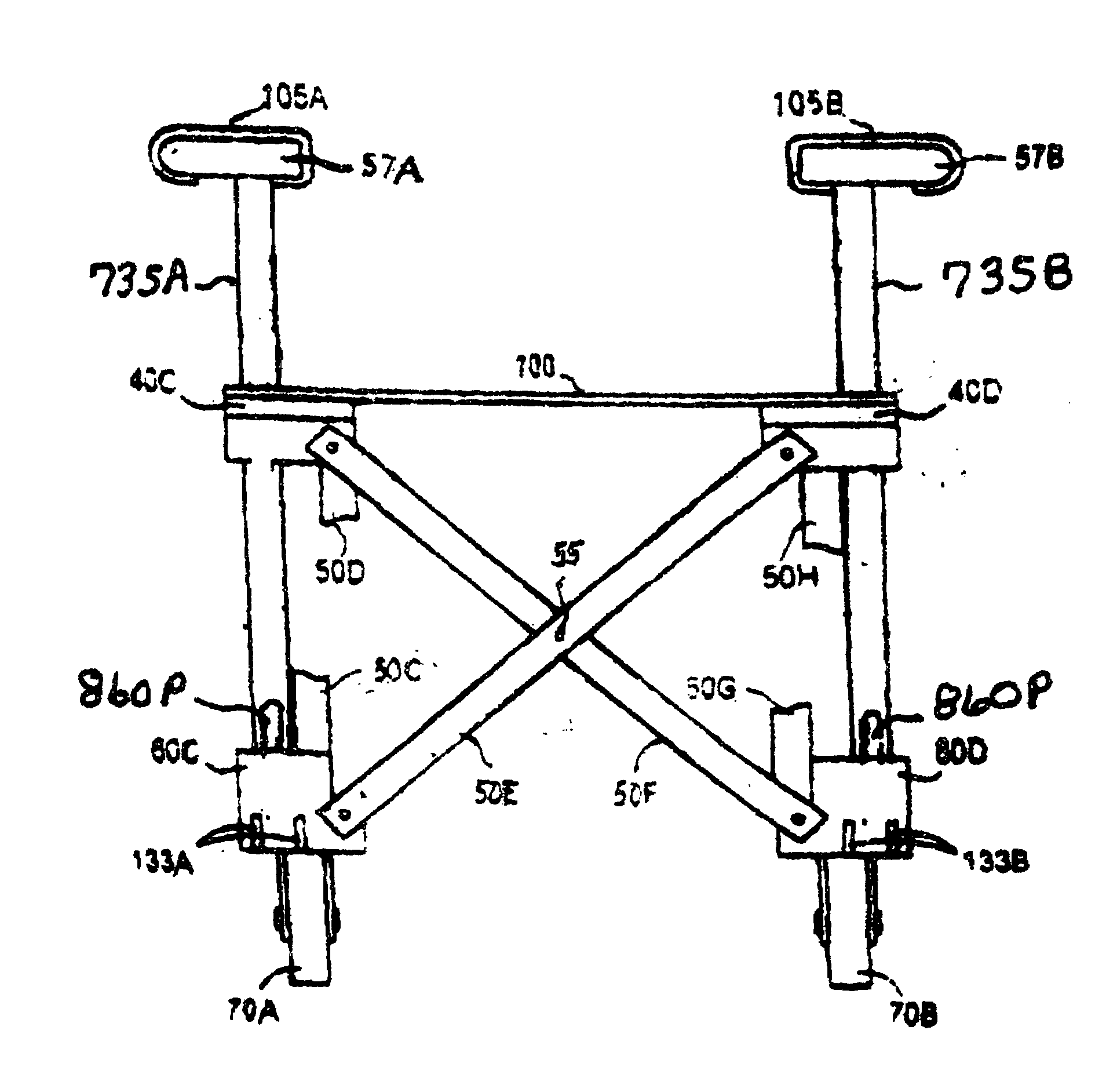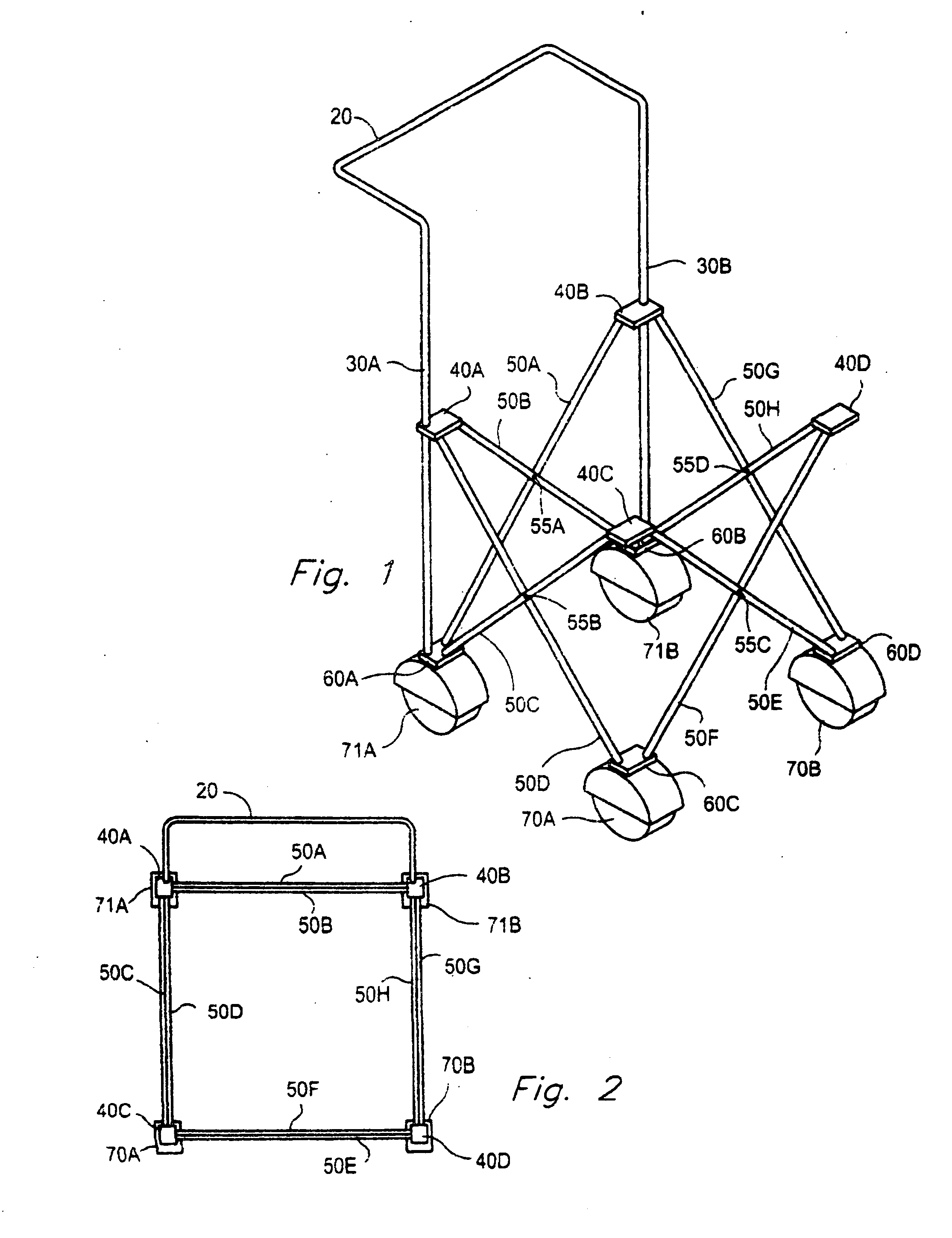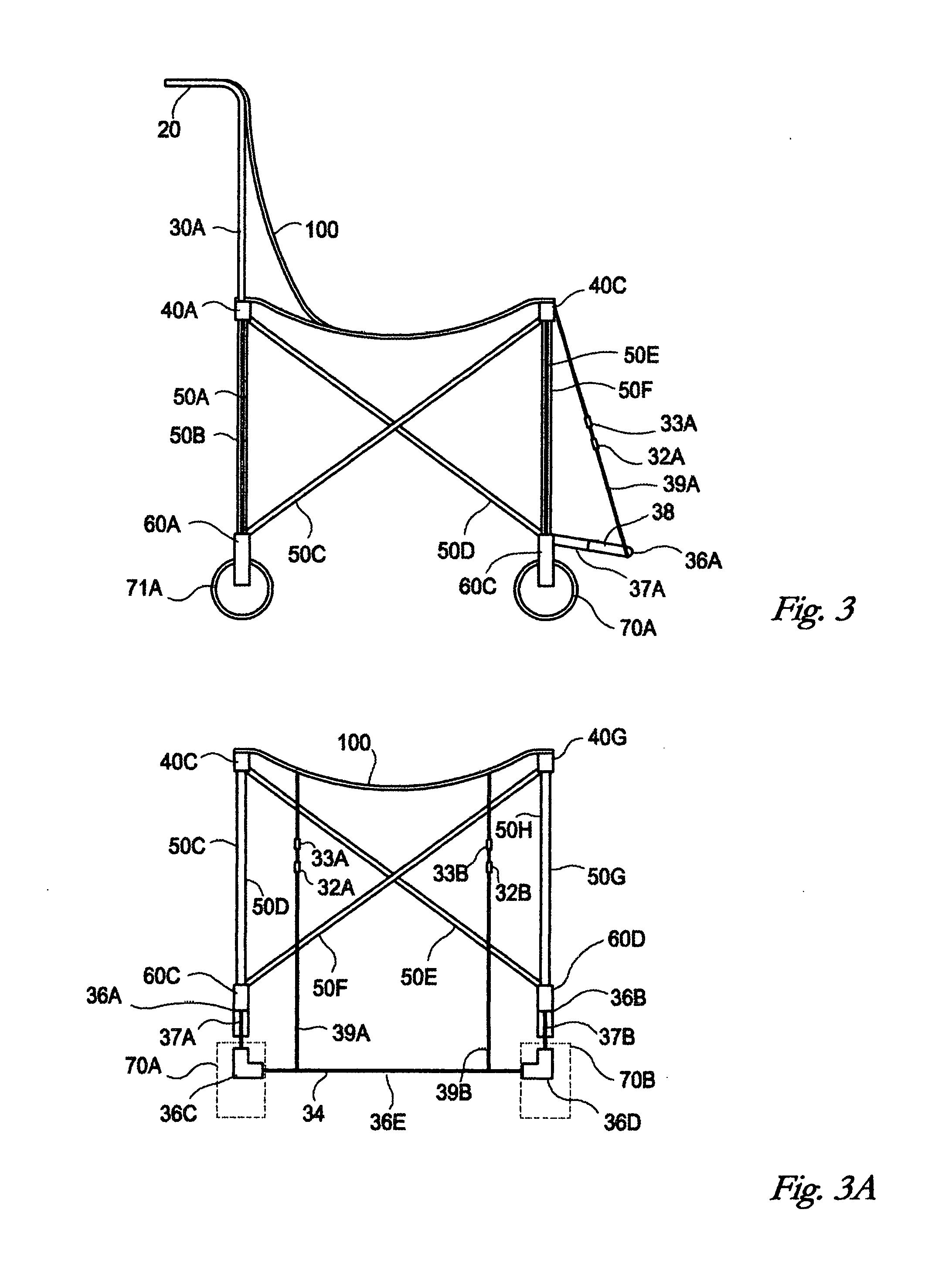Assistive mobility device
- Summary
- Abstract
- Description
- Claims
- Application Information
AI Technical Summary
Benefits of technology
Problems solved by technology
Method used
Image
Examples
Embodiment Construction
[0044]For easy of understanding, in this patent application specification, references numerals to identical features and parts are identical to those appearing in U.S. Pat. No. 6,776,433 and new reference numbers are so designated.
[0045]Referring now to the drawings, FIG. 1 and FIG. 2 without a seat and back means illustrate the basic frame structure described in U.S. Pat. No. 6,776,433. The preferred embodiment of the four-sided frame is comprised of two (2) seat support arms 50A and 50B, 50C and 50D, 50E and 50F and 50G and 50H per side, four (4) upper corner brackets 40A, 40B, 40C, and 40D, four (4) lower corner brackets 60A, 60B, 60C and 60D, two (2) vertical back rest posts 30A and 30B, a push bar 20, and four (4) removable casters 70A, 70B, 71A and 71B. FIG. 3 is a side view of a preferred embodiment with a flexible one piece backrest and seat means 100 shown. The backrest and seat means 100 are attached at the upper corner brackets 40A, 40B, 40C and 40D and to the back rest p...
PUM
 Login to View More
Login to View More Abstract
Description
Claims
Application Information
 Login to View More
Login to View More - R&D
- Intellectual Property
- Life Sciences
- Materials
- Tech Scout
- Unparalleled Data Quality
- Higher Quality Content
- 60% Fewer Hallucinations
Browse by: Latest US Patents, China's latest patents, Technical Efficacy Thesaurus, Application Domain, Technology Topic, Popular Technical Reports.
© 2025 PatSnap. All rights reserved.Legal|Privacy policy|Modern Slavery Act Transparency Statement|Sitemap|About US| Contact US: help@patsnap.com



